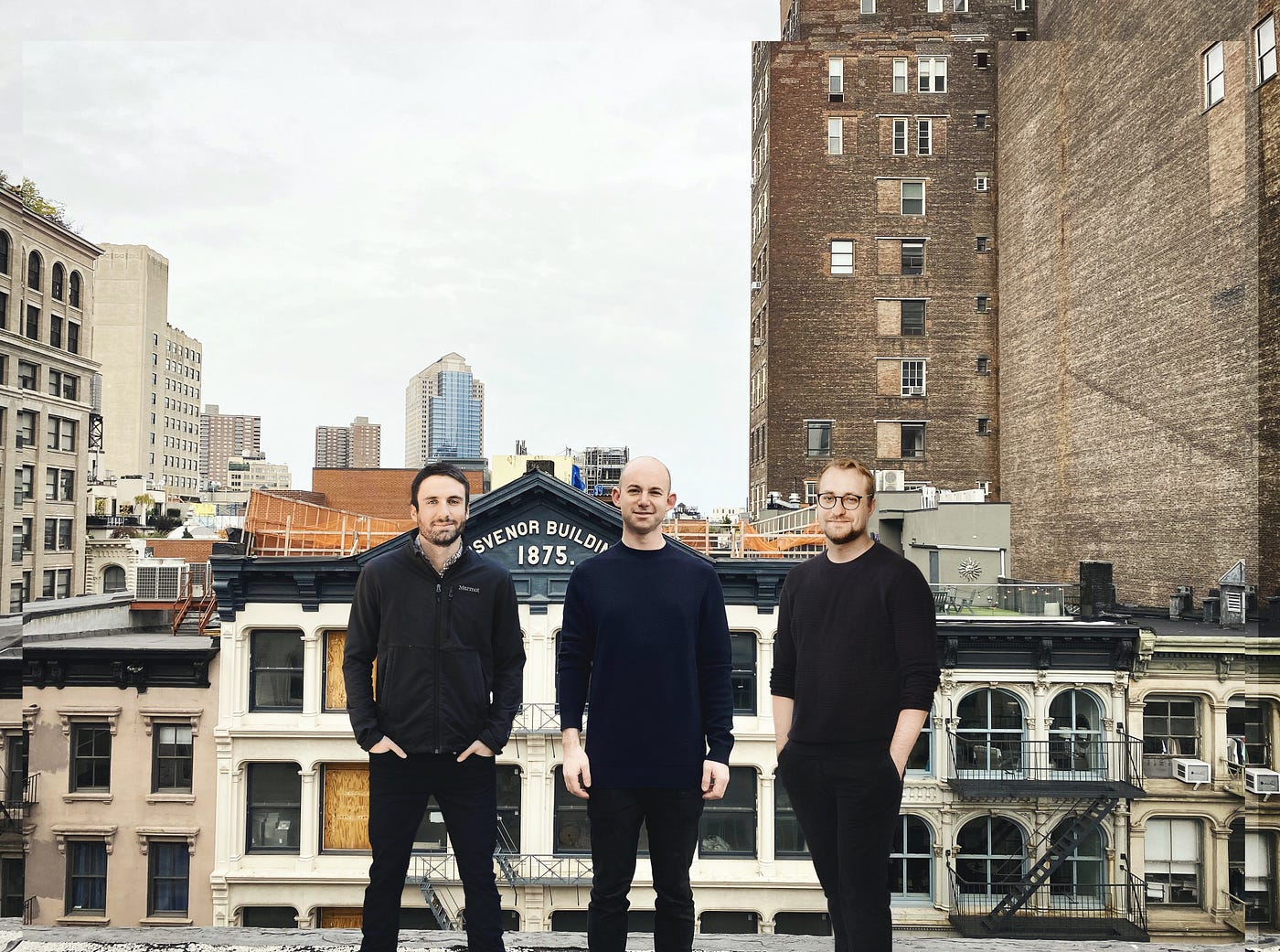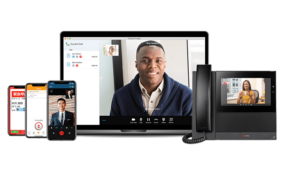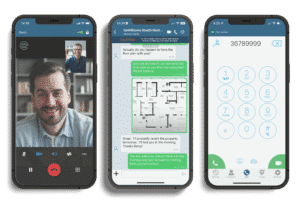
Weare living in a new world in which offices are becoming obsolete. How can teams effectively communicate if they are never together? Zoom and Slack are excellent tools, but they don’t replicate all the advantages of being together. What strategies, tools, and techniques work to be a highly effective communicator, even if you are not in the same space?
In this interview series, we are interviewing business leaders who share the strategies, tools, and techniques they use to effectively and efficiently communicate with their team who may be spread out across the world. As a part of this series, I had the pleasure of interviewing Audrius Zujus.
Audrius Zujus is the Co-founder and CTO at Argyle. He’s a former defense executive with experience working in the fields of open banking, security, and VR/AR. He previously led Nato STO boards, creating STANAG standards for VR/AR use across all NATO nations, worked with open banking innovation at Deloitte Digital and advised numerous Fortune 500 companies as a technology consultant. In his free time Audrius often works with personal hardware projects such as building arrays of Moun scanners and writes about technologies such as AI or VR.
Thank you so much for joining us in this interview series! Before we dive in, our readers would love to “get to know you” a bit better. Can you tell us a bit about your ‘backstory’ and how you got started?
Prior to Argyle, I worked at Deloitte Digital as a developer, focused on open banking. My early days there helped lay the foundation for the problem Argyle is solving.
After Deloitte I built a VR AR startup and eventually sold it to one of the largest defense contractors in Europe. The data security and highly regulated aspects of this work turned out to be highly relevant to what we do at Argyle around data privacy and personal data security.
Those two past experiences were the perfect blend for Argyle and tackling new ways for awarding credit.
I met Shmulik Fishman, one of my fellow Argyle co-founders, as he was forming a new fintech startup. He was looking for technical candidates, and we hit it off and started riffing about open banking. From there we began building a team. It was a very organic process.

Can you share the most interesting story that happened to you since you began your career?
One of the most surprising things that has happened at Argyle is the meeting of coworkers in-person for the first time. And it’s “surprising” because in our completely remote organization we have adapted very well to 2-D interactions on screen and working across digital platforms. We just held an in-person meeting for the first time in Lithuania with the engineering organization. And there is a real joy in finally getting to interact in 3-D and translate the relationships we’ve built online into the real world.
Another surprising experience at Argyle has been stumbling upon Slack channels in our company that are in different languages. For instance, I recently found myself in a Brazilian Slack channel. There are so many languages spoken across our company, that it was a reminder not just of our company’s diversity but how humbling it is that our engineers work in their second and third languages, both spoken and code languages.
Can you please give us your favorite “Life Lesson Quote”? Can you share how that was relevant to you in your life?
I have a couple favorite quotes. The first is, “Everything in life is interesting — you just have to look deep enough.” Everything in the world is connected, from the smallest pieces to the largest, and when you go deep enough, you can find interesting similarities and patterns.
I also believe that “luck is a talent.” Everything we do in life largely depends on luck but we need to put in the effort in life and work to make it happen. It is a talent, learning how to open yourself up to opportunities and “getting lucky” in the sense of being able to do exciting things.
None of us are able to achieve success without some help along the way. Is there a particular person who you are grateful towards who helped get you to where you are? Can you share a story about that?
I have a lot of respect for one of my Deloitte coworkers from the innovation side of the company, Paul Lee. One of our projects was writing future predictions for technology, which Deloitte published every year. It also allowed us to conduct VR and AR experiments along the way. Paul had a very particular function at Deloitte, of predicting the future — that’s a hard task to carry. We had a shared skepticism around specific topics and narrative violations. He was conscious of not being blinded by the hot tech topics of the day, and I learned a tremendous amount from him.
The pandemic has changed so many things about the way we behave. One of them, of course, is how we work and how we communicate in our work. Many teams have started working remotely. Working remotely can be very different than working with a team that is in front of you. This provides a great opportunity but it can also create unique challenges. To begin, can you articulate for our readers a few of the main benefits of having a team physically together?
When you’re physically together, you see and feel the information, including an individual’s sentiment. In fact, you can be flooded with all that information. It can be great or taxing. Being remote, you have to overcompensate and go the extra mile to talk about sentiment.
In-person gatherings also have the advantage of bringing people together over food — you can break bread together. On the flip side, you know people genuinely want to be there when they show up to remote meetings.
In a real-world setting, it’s easier and more fluid for employees to get to know and learn from each other and begin functioning as a unit. It’s more effort time-wise to do it remotely, however you can still arrive at the same destination — you just have to be more conscious about how you do it.
On the flip side, can you articulate for our readers a few of the main challenges that arise when a team is not in the same space?
When you’re not in the same physical space you have to be more intentional about things that come naturally in an in-person environment. We’ve actually turned this into a strength for Argyle. These are several of the key challenges:
- Being able to spread information evenly to everyone. For engineers the concept of “eventual consistency” will make sense in this example. This is true for any large organization but it’s true at the very start for successful remote organizations.
- You need to go the extra mile to include everyone outside of the company’s “regular” time zones. For example, making sure the New Zealand team has calls recorded for them and you get and incorporate their feedback. Focus on the asynchronous conversations. RFCs (request for comment) come in very helpful where ideas can be discussed for several days via comments.
- It’s harder to hang out after work. For example, hanging out for drinks doesn’t happen in a remote organization but there are fun, engaging activities that spark spontaneous moments and rapport building that can be facilitated online, and you should go the extra mile to make it happen.
Based on your experience, what can one do to address or redress each of those challenges? What are your “5 Things You Need To Know To Communicate With Your Team Effectively Even If You Are Rarely In The Same Physical Space? (Please share a story or example for each.)
- Embrace asynchronous remote work. Running a remote organization is not about being on video calls all day! Enable your team members — across all your different time zones — to communicate effectively together. We call this asynchronous remote work. When one team ends their day, another team is coming online and can quickly get up to speed on what has been happening across the company. That includes being able to participate equally in conversations via the recording of meetings and shared notes.
- Create a casual company culture, and allow people to be themselves. With remote work, we can miss out on some aspects of human nature that automatically encourage bonding and relationship building. Go the extra mile to help your team build rapport with one another and create environments for sharing. It’s all about the people, so get to know them and help them get to know each other even if they are on the other side of the world. Allow team members to create forums where they can share about their pets, families, or activities. Life-long friendships can develop even if you’ve never met someone in-person!
- Document processes and procedures. Document everything! Don’t leave your team second guessing if they are doing things the right way. Also create channels for feedback and suggestions.
- Crowdsource feedback. At Argyle we use requests for comments, or RFCs, to collect ideas from our colleagues on specific topics. RFCs were actually invented at the onset of the internet by engineers who needed feedback on their ideas to evolve the internet. We use RFCs for more than engineering work at Argyle — for marketing, product development, and new business ideas. They are a highly effective way to flesh out and advance concepts. And this can all happen asynchronously.
- Measure team sentiment. We use tools that allow us to asynchronously gather employee feedback and data on their well-being. Every week our team fills out questionnaires and provides feedback on topics ranging from stress levels to how they feel about the progress being made inside the company. We can quantifiably measure if we are doing better, and it gives everyone a voice. It also allows us to respond accordingly with appropriate actions when our metrics indicate there may be issues.
Has your company experienced communication challenges with your workforce working from home during the pandemic?
Well before COVID-19 took remote work mainstream, we had been running Argyle as a completely distributed organization. My company’s workforce spans five continents, 20 countries and 16 languages — that’s a lot of distance, logistics and diverse perspectives.
From the start we defined our workplace through the lens of transparent person-to-person connections instead of physical walls. We put practices into place that build morale and created repeatable processes that scale in harmony with our culture.
Many tools have been developed to help teams coordinate and communicate with each other. In your personal experiences which tools have been most effective in helping to replicate the benefits of being together in the same space?
We essentially run Argyle on these three apps:
- Notion for storing information. It is our primary source of truth and collaboration. A lot of the company is managed through and out of Notion. We even raised our Series A funding using a Notion document instead of a traditional deck! https://www.notion.so/customers/argyle
- Slack for communication. If something comes out of discussion on Slack, it gets transferred into Notion.
- Rippling for process. This employee management platform streamlines everything from offer letters to shipping laptops and equipment to our employees.
If you could design the perfect communication feature or system to help your business, what would it be?
We probably will design one! It would be a single system that seamlessly brings together the best of the apps we currently use for storing information, internal and external communication, and processes.
My (the reporter’s) particular expertise and interest is in Unified Communications. Has the pandemic changed the need or appeal for unified communications technology requirements? Can you explain?
With much intention and well before the global pandemic, unified communications were already in Argyle’s design. The pandemic has proven this is the way to go.
Being a remote, asynchronous global team is a huge advantage for us. For instance, being location-agnostic allows us to source the best talent worldwide, and we can embrace the true diversity of location, background, etc.
The technology is rapidly evolving and new tools like VR, AR, and Mixed Reality are being developed to help bring remote teams together in a shared virtual space. Is there any technology coming down the pipeline that excites you?
I believe mixed reality/augmented reality is in our future. The question is how long will it take? It’s maybe 20 years out. We need to be able to take the best computing power we have for laptops and be able to use it on our face. VR can be great for training purposes and some niche use cases but it’s also an isolating experience — in the workplace you need to be able to see each other’s faces to communicate. Right now we’re placing a metal box (a monitor) with pixels in front of us when in the future we could get rid of the monitors and just have pixels in front of our eyes simulating as many screens as we want. For that we need a lot more computing power, much better sensors that detect objects, and we need the ability to interlink all the AR devices so they scan the surroundings from all possible angles.
The most interesting company in this space is Valve, a gaming company. I’m looking forward to seeing anything they build and release that could help enhance remote communications.
Is there a part of this future vision that concerns you? Can you explain?
As with any new tech, there’s probably an aspect of it yet to be discovered, such as the addiction we have to our phones. Having the right information at the right time in front of you will always be important. Also, I don’t believe AR will eliminate phones, it will enhance them.
So far we have discussed communication within a team. How has the pandemic changed the way you interact and engage your customers? How much of your interactions have moved to digital such as chatbots, messaging apps, phone, or video calls?
Because we have always worked as a distributed organization, prior to the pandemic we had processes in place for engaging with our customers virtually.
We are big believers in collecting customer feedback. We listen very closely to what our customers are telling us. As a B2B company, we don’t have hundreds of thousands of clients like consumer companies do. We have a concentrated set of customers who strongly impact what we build based on their needs.
When it comes to building feature requests from our customers, we gather all the inbound requests and derive themes. These themes become the building blocks for new versions and iterations of our product. For example, if there is a theme about payment distribution systems, we collect all the requirements and suggestions and spin out a proof of concept. After the proof of concept is built, we carefully select two or three customers to partner with us to launch it and evaluate how it performs in real life. Once that has been tested, it gets generally released, and we have a product that was driven based on actual client need.
We foster a very close communication channel with our customers, and we’re unique in that we don’t put our customers behind a Zendesk wall or a ticketing system. Many of our customers are on Slack with us and can quickly reach Argyle that way if anything comes up. We want to hear directly from the users themselves. It enables us to learn from what they need, even if that need comes in the form of questions about the best technology to choose.
In my experience, one of the trickiest parts of working with a remote team is giving honest feedback, in a way that doesn’t come across as too harsh. If someone is in front of you much of the nuance can be picked up in facial expressions and body language. But not when someone is remote. Can you give a few suggestions about how to best give constructive criticism to a remote team member?
It’s important to develop a feedback framework for remote organizations. This is how Argyle’s is structured:
- Write out the feedback.
- Share the feedback in a message ahead of your meeting. 1) There is time to read and process the information and come up with answers and ideas, and 2) the emotions subside in most cases prior to the live meeting to discuss the feedback.
- Have the 1:1 and also make sure you check in with the person about any emotions that arise out of the feedback process.
Can you give any specific ideas about how to create a sense of camaraderie and team cohesion when you are not physically together?
What unites people online and in-person is having adventures together, doing things in a space where you don’t control the whole environment, such as a collaborative game. It brings people together and fosters teamwork. It’s all about human interaction, making discoveries together, and creating a shared experience. For example, my team has solved virtual escape rooms as a way to have fun and bond.
If you could inspire a movement that would bring the most amount of good to the most amount of people, what would that be?
I would love to foster a movement around data ownership and standards for data ownership where everyone owns their own data. It would allow individuals to be protective of their data and not have companies monetize off consumers’ data without permission. And we are contributing to that movement here at Argyle.
How can our readers further follow your work online?
Thank you so much for the time you spent doing this interview. This was very inspirational, and we wish you continued success.
About The Interviewer: David Liu is the founder and CEO of Deltapath, an award-winning unified communications company that liberates organizations from the barriers of effective communication. Liu is known for his visionary leadership, organic growth strategies, and future-forward technology. Liu is highly committed to achieving a greater purpose with technology. Liu’s business insights are regularly featured in Forbes, Entrepreneur Magazine, Tech Crunch, and more.


